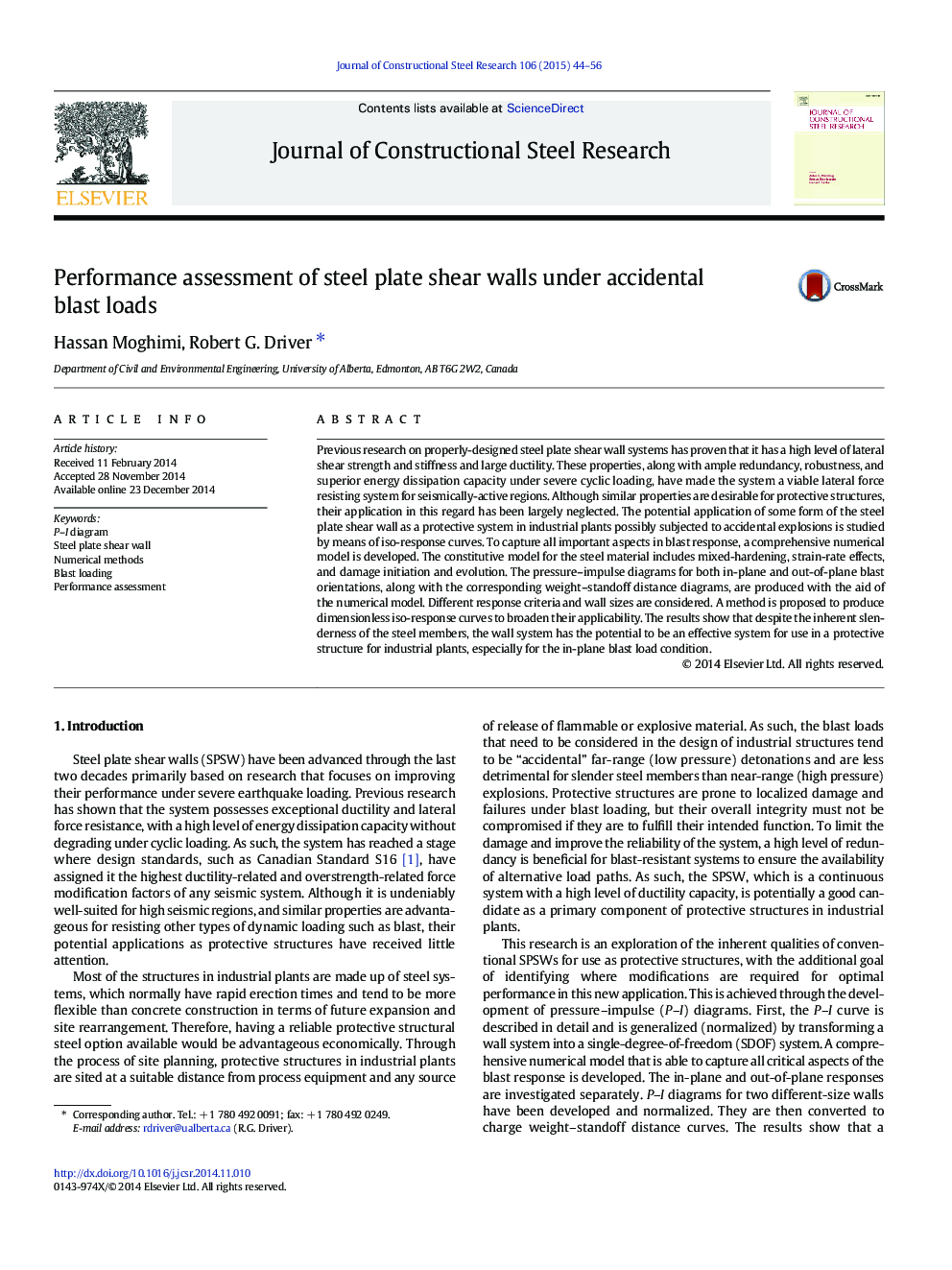| Article ID | Journal | Published Year | Pages | File Type |
|---|---|---|---|---|
| 284487 | Journal of Constructional Steel Research | 2015 | 13 Pages |
•The nondimensional P–I diagram provides an efficient tool for preliminary design of SPSW system.•Damage and failure criteria should be considered in the FE models used to develop P–I diagram.•SPSW system has the potential to be an effective protective structure in industrial plants.
Previous research on properly-designed steel plate shear wall systems has proven that it has a high level of lateral shear strength and stiffness and large ductility. These properties, along with ample redundancy, robustness, and superior energy dissipation capacity under severe cyclic loading, have made the system a viable lateral force resisting system for seismically-active regions. Although similar properties are desirable for protective structures, their application in this regard has been largely neglected. The potential application of some form of the steel plate shear wall as a protective system in industrial plants possibly subjected to accidental explosions is studied by means of iso-response curves. To capture all important aspects in blast response, a comprehensive numerical model is developed. The constitutive model for the steel material includes mixed-hardening, strain-rate effects, and damage initiation and evolution. The pressure–impulse diagrams for both in-plane and out-of-plane blast orientations, along with the corresponding weight–standoff distance diagrams, are produced with the aid of the numerical model. Different response criteria and wall sizes are considered. A method is proposed to produce dimensionless iso-response curves to broaden their applicability. The results show that despite the inherent slenderness of the steel members, the wall system has the potential to be an effective system for use in a protective structure for industrial plants, especially for the in-plane blast load condition.
